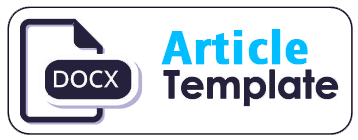Author Guidlines
The manuscript texts are written in English. Authors may have to make sure that the paper is prepared using Bangun Rekaprima Template. Manuscripts will be first reviewed by editorial boards. The main text of a manuscript must be submitted as a Word document (.doc) or Rich Text Format (.rtf) file. The manuscript consists of 5000 words (minimum), is well-typed in two columns on A4 size paper, and uses 12 pt of Times New Roman. The manuscript contains an original work and has potentially contributed to the highly scientific advancement.
The manuscript should contain the following sections in this order:
- Title. The title of articles should describe the main content of manuscripts, be informative, concise, and not too wordy (12-15 words only), and should not contain formulas.
- The author’s name. Full name without academic degrees and titles, written in capital letters. The manuscript written by the groups needs to be supplemented with complete contact details.
- Name of affiliation for each author. The author's name should be accompanied by a complete affiliation address, postal code number, telephone number, and email address.
- Abstract. Written briefly in one paragraph of 150-200 words, containing background, research objectives, methodology, results, conclusion of the study, and your research contributions to science.
- Keywords. Consist of 3-5 words or groups of words, written alphabetically.
- Introduction. Explain the background, problems, and importance of research, provide a brief literature review that relates directly to research or previous findings that need to be developed, and end with a paragraph on research purposes. A balance must be kept between the pure and applied aspects of the subject. The introduction is presented in the form of paragraphs of approximately 1000 words.
- Methods. Make sure that work can be repeated according to the details provided. It contains technical information of the study presented clearly. Therefore, readers can conduct research based on the techniques presented. Materials and equipment specifications are necessary. Approaches or procedures of study, together with data analysis methods, must be presented.
- Results and Discussion. Well-prepared tables and or figures must be of significant feature of this section, because they convey the major observations to readers. Any information provided in tables and figures should no longer be repeated in the text, but the text should focus on the importance of the principal findings of the study. In general, journal papers will contain three to seven figures and tables. The same data cannot be presented in the form of tables and figures. The results of the study are discussed to address the problem formulated, as well as the objectives and research hypotheses. It is highly suggested that the discussion be focused on why and how the research findings can happen and the extent to which the research findings can be applied to other relevant problems.
- Conclusion. The conclusion should be withdrawn on the basis of research findings, formulated concerns, and research purposes. The conclusion is presented in one paragraph without a numerical form of expression. Explain your research contributions to science.
- Acknowledgement. Contributors who are not mentioned as authors should be acknowledged, and their particular contributions should be described. All sources of funding for the work must be acknowledged, both the research funder and the grant number (if applicable) should be given for each source of funds.
- References. Manuscripts are written by using standard citation applications (Mendeley/Endnote/Zotero). IEEE reference style is required. More or less 80% of references for literature reviews should be from recent (up-to-date) journals published in the last 10 years, but the rest of the 20 % of references can be cited from research reports and or articles.





